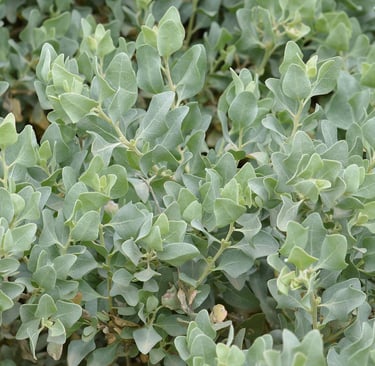Gardening with Bore Water in the Winton Formation and Eromanga Basin


Delving into the unique challenges of water scarcity in the Winton Formation and Eromanga Basin in Australia unveils an intriguing landscape for gardening and agriculture. Bore water, sourced from underground aquifers, emerges as a vital resource, albeit with complexities that demand a deeper understanding of its composition, effects on plants, and considerations for effective utilisation.
The Science Behind Bore Water
Bore water in these regions carries a diverse mineral composition comprising calcium, magnesium, sodium, potassium, sulphate, chloride, and bicarbonate. These elements, while fundamental, intricately influence the water's characteristics and suitability for agricultural use.
Navigating Key Considerations
Exploring the potential of bore water for horticulture and farming necessitates meticulous attention to several critical factors:
1. Water Quality Analysis: It is imperative to regularly assess bore water pH, electrical conductivity (EC), and mineral content. Elevated salinity or alkalinity levels can significantly impact plant health and soil vitality.
2. Soil Management Strategies: Elevated salinity in bore water can lead to soil salinisation, which jeopardises root health and nutrient absorption. Implementing corrective measures, such as gypsum application, aids in restoring soil equilibrium.
3. Plant Selection Criteria: It is pivotal to opt for plant species with inherent salt tolerance. Indigenous flora like saltbushes, resilient grass varieties, and succulents thrive under saline irrigation conditions.
4. Optimised Irrigation Techniques: Embracing precision irrigation methods like drip or subsurface irrigation minimises water wastage and curtails salt accumulation.
Deciphering Saltbush Dynamics in Saline Environments
Saltbushes epitomise resilience in saline soils, showcasing remarkable adaptability through nuanced mechanisms:
- Salt Regulation: Saltbushes exhibit adept control over salt influx, shielding cells from excessive salinity.
- Salt Excretion: Certain saltbush species feature specialised salt glands that expel surplus salts, maintaining optimal internal salt levels.
- Osmotic Equilibrium: Intricate osmotic mechanisms allow saltbushes to uphold cellular integrity and water balance despite challenging saline conditions.
Enhancing Soil Health through Saltbush Integration
Saltbushes not only thrive in saline soils but also catalyse soil amelioration through various pathways:
- Salt Mitigation: By actively extracting salts from the soil, saltbushes contribute to long-term salinity reduction.
- Organic Enrichment: The organic matter derived from saltbush growth and leaf decomposition enriches soil structure, fostering enhanced water retention and nutrient provision.
- Erosion Prevention: Deep-rooted saltbushes are natural safeguards against soil erosion, crucial for preserving soil integrity in susceptible saline environments.
Future Insights and Pragmatic Approaches
Exploring the symbiotic relationship between bore water, saltbushes, and sustainable agriculture unveils promising prospects. Strategically aligning planting schemes, implementing efficient irrigation methodologies, and embracing ongoing soil monitoring heralding a resilient future for agricultural endeavours amidst challenging environmental dynamics.
In essence, the Winton Formation and Eromanga Basin beckon with opportunities for conscientious water use, ecological balance, and agricultural sustainability. They showcase the transformative potential of interdisciplinary approaches to harnessing natural resources for societal benefit.
